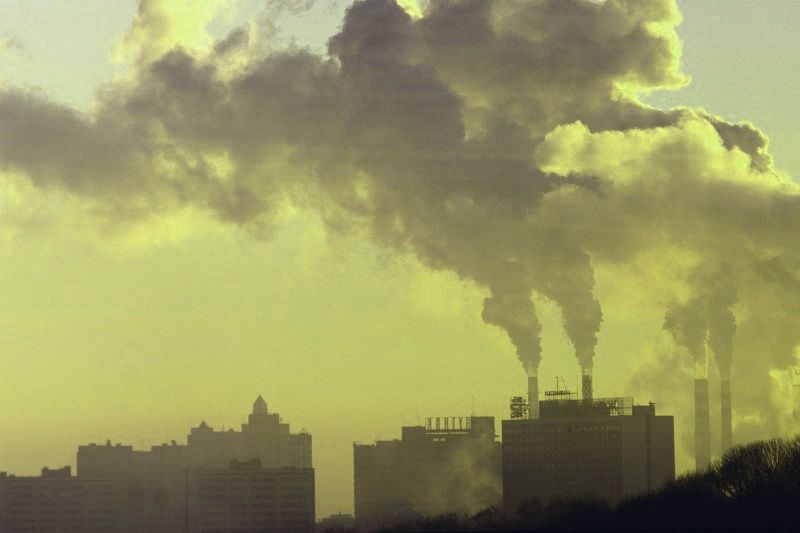What 'net-zero emissions' means for civil engineers

|
| The UK is aiming for net-zero greenhouse gas emissions within the next 30 years. Greg Guthrie of the ICE’s maritime panel says meeting the target will have profound implications for civil engineers |
Contents |
[edit] Introduction
On 27 June 2019, the UK government amended the Climate Change Act 2008 to raise its target for cutting greenhouse gas emissions from 80% (of 1990 levels) to 100% by 2050. This would effectively end the UK's contribution to global warming in just over 30 years.
The new ‘net-zero’ target is in line with a May 2019 recommendation from the UK Committee on Climate Change. It will enable Britain to deliver its commitment to the 2016 Paris Agreement, which the government believes is achievable with known technologies, alongside improvements to people’s lives, and within the economic cost it accepted when legislating the existing 80% target in the 2008 Act.
While many of the policy foundations are in place, a major ramp-up in policy effort and delivery of new solutions is required. Detailed recommendations are made for every part of the economy, including quadrupling of low-carbon-dioxide electricity supply by 2050, near-full ‘decarbonisation’ of heat for buildings by 2050, and a switch to electric vehicles − reaching 100% of new sales in 2040.
[edit] Implications for civil engineering
The net-zero target will have profound implications for the civil engineering profession. Clear leadership is needed, with an important role for the Institution of Civil Engineers (ICE) and other professional bodies in delivering a collective response to this challenge
The CCC’s conclusions were based on an updated understanding of the science of climate impacts and global emissions' reductions needed to address climate change in the light of the the Paris Agreement. That understanding includes the updated UK Climate Projections 2018 (UKCP18) published in November by the Meteorological Office.
UKCP18 shows how significant the potential impacts of climate change will be, with predicted global temperature increases of 2.0−3.7°C and sea level rises of 1−2m by 2100, plus increasing risk of droughts and periods of more intense rainfall.
The changes represent a new playing field for civil engineers. The profession can no longer rely purely on past experience to define what the future holds, making it far more challenging to plan, design and deliver new infrastructure as well as enhancements to existing infrastructure.
[edit] Mitigation and adaption
The CCC report set out the fundamental need for mitigation of the causes of climate change and, together with UKCP18, specified the challenge of how civil engineers respond to, and plan for, those climate change effects already built into the global system. Adaptation is the other side of the coin, and these two publications will be key references for civil engineers in coming years.
A practical next step for civil engineers is to incorporate the UKCP18 evidence in the profession’s approach to professional competence, design and thinking. This raises a range of issues including how to plan for uncertainty over different timescales, ensuring good value for money now but with an eye to the future-proofing of present-day investment, and ensuring decisions made now do not lead down unsustainable dead ends in future.
[edit] About this article
This article was written by ice.org.uk Greg Guthrie, ICE Maritime Expert Panel, and is based on the authors’ briefing article in the latest issue of the ICE Civil Engineering journal. It was also previously published on the ICE website and can be accessed here.
Other articles by the Institution of Civil Engineers (ICE) on Designing Buildings Wiki can be found here.
[edit] Related articles on Designing Buildings Wiki
- Biomass.
- BREEAM Adaptation to climate change.
- Carbon emissions.
- Carbon plan.
- Climate Change Act.
- COP21 Paris 2015.
- Emission rates.
- Energy.
- Energy targets.
- Environmental modelling.
- Environmental policy.
- Global warming and the tipping point precipice.
- Globe temperature.
- Green Deal.
- Green plot ratio.
- Greenhouse gases.
- Happold lecture on climate change.
- ICE launches engineering route map to deliver UN SDGs.
- Intergovernmental Panel on Climate Change IPCC.
- Kyoto Protocol.
- Not a choice between renewables and nuclear - we need both.
- Radiation.
- RIBA Stirling Prize winners' open letter declaring climate and biodiversity emergency.
- Sustainability.
- UN Sustainable Development Goals.
Featured articles and news
RTPI leader to become new CIOB Chief Executive Officer
Dr Victoria Hills MRTPI, FICE to take over after Caroline Gumble’s departure.
Social and affordable housing, a long term plan for delivery
The “Delivering a Decade of Renewal for Social and Affordable Housing” strategy sets out future path.
A change to adoptive architecture
Effects of global weather warming on architectural detailing, material choice and human interaction.
The proposed publicly owned and backed subsidiary of Homes England, to facilitate new homes.
How big is the problem and what can we do to mitigate the effects?
Overheating guidance and tools for building designers
A number of cool guides to help with the heat.
The UK's Modern Industrial Strategy: A 10 year plan
Previous consultation criticism, current key elements and general support with some persisting reservations.
Building Safety Regulator reforms
New roles, new staff and a new fast track service pave the way for a single construction regulator.
Architectural Technologist CPDs and Communications
CIAT CPD… and how you can do it!
Cooling centres and cool spaces
Managing extreme heat in cities by directing the public to places for heat stress relief and water sources.
Winter gardens: A brief history and warm variations
Extending the season with glass in different forms and terms.
Restoring Great Yarmouth's Winter Gardens
Transforming one of the least sustainable constructions imaginable.
Construction Skills Mission Board launch sector drive
Newly formed government and industry collaboration set strategy for recruiting an additional 100,000 construction workers a year.
New Architects Code comes into effect in September 2025
ARB Architects Code of Conduct and Practice available with ongoing consultation regarding guidance.
Welsh Skills Body (Medr) launches ambitious plan
The new skills body brings together funding and regulation of tertiary education and research for the devolved nation.
Paul Gandy FCIOB announced as next CIOB President
Former Tilbury Douglas CEO takes helm.
UK Infrastructure: A 10 Year Strategy. In brief with reactions
With the National Infrastructure and Service Transformation Authority (NISTA).























